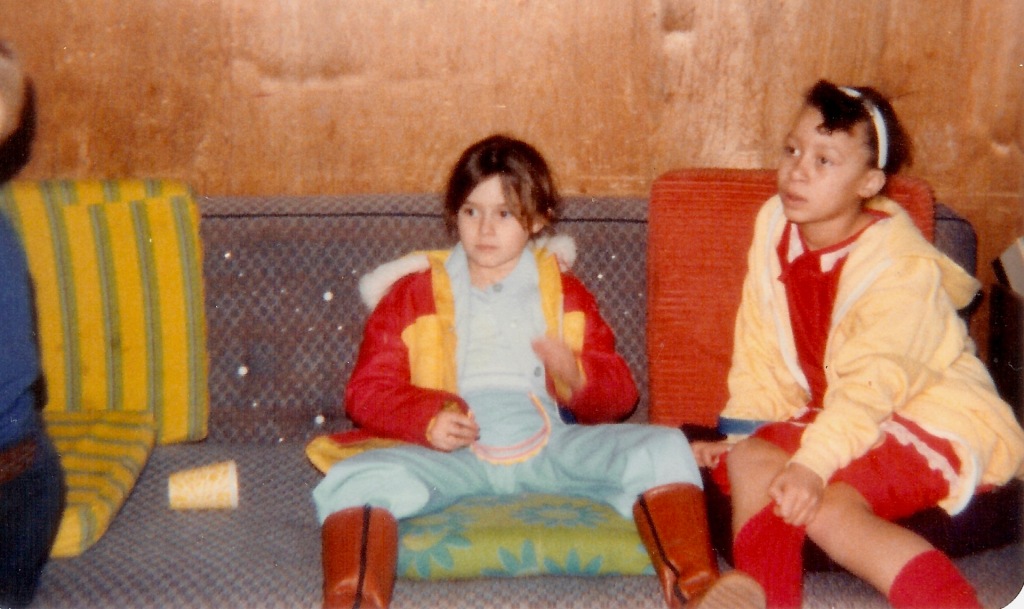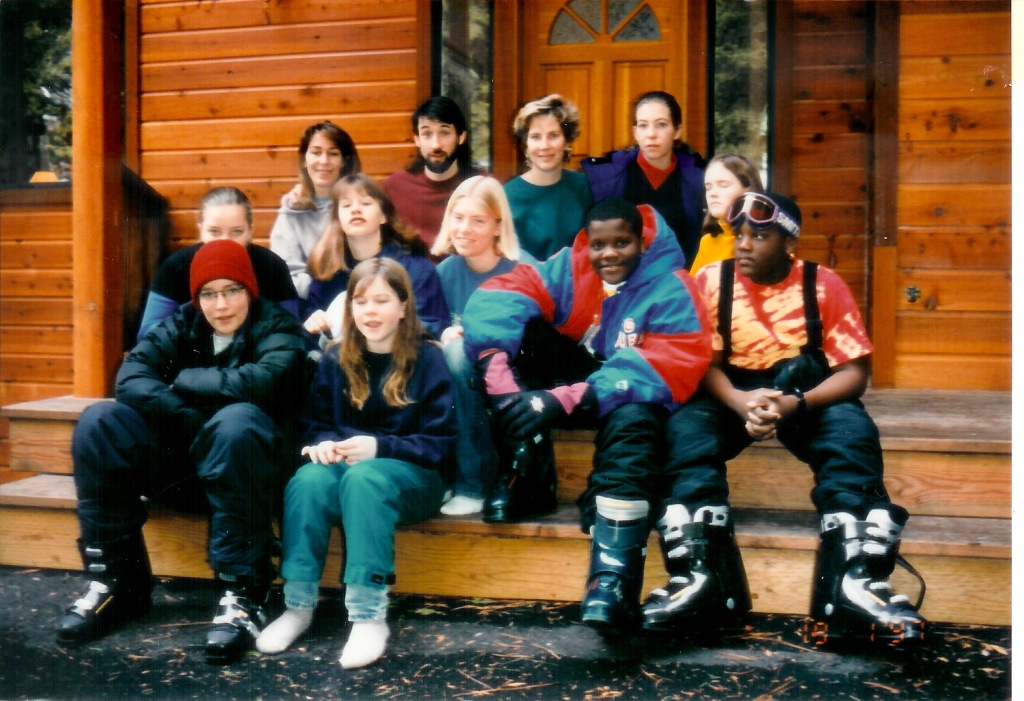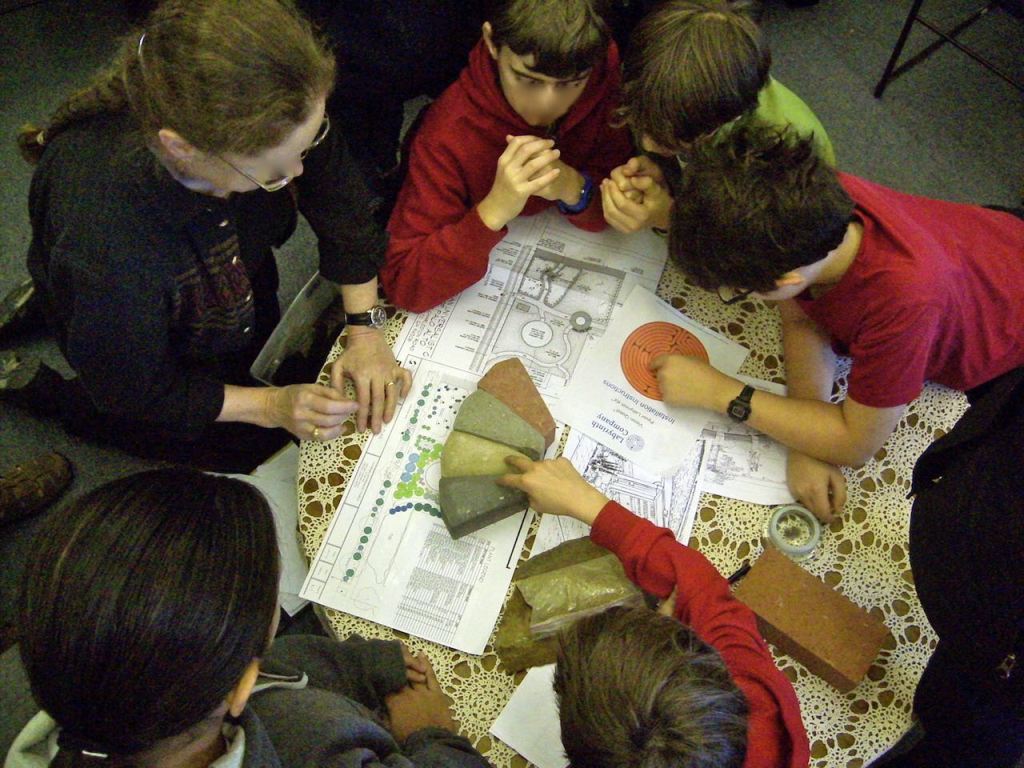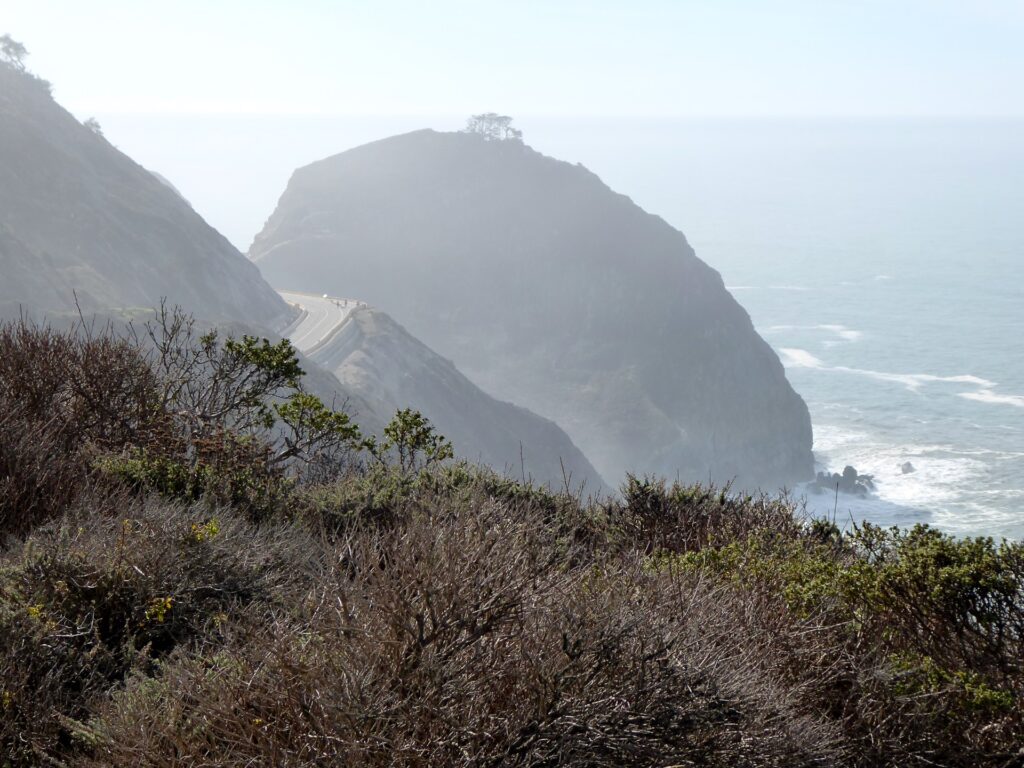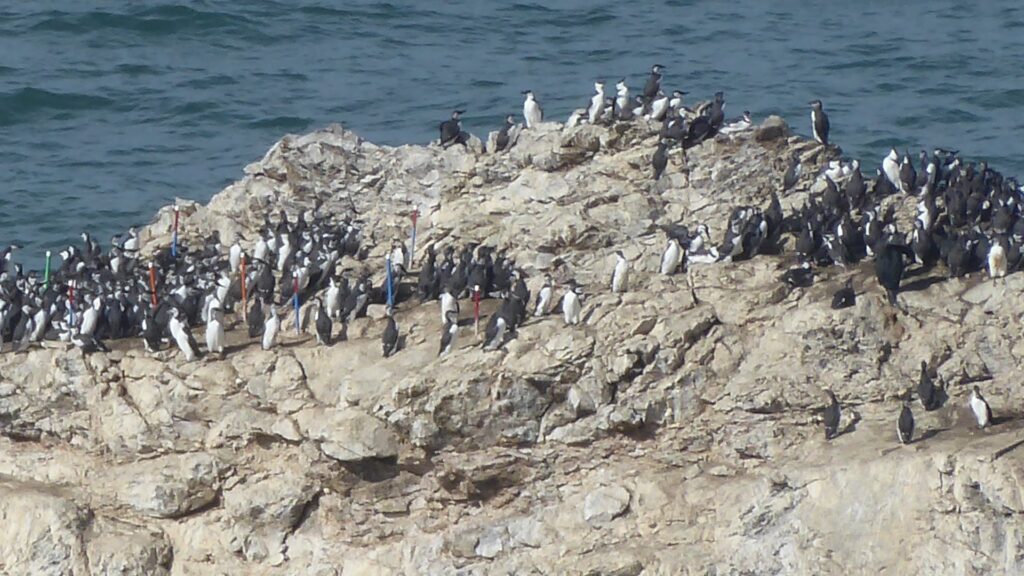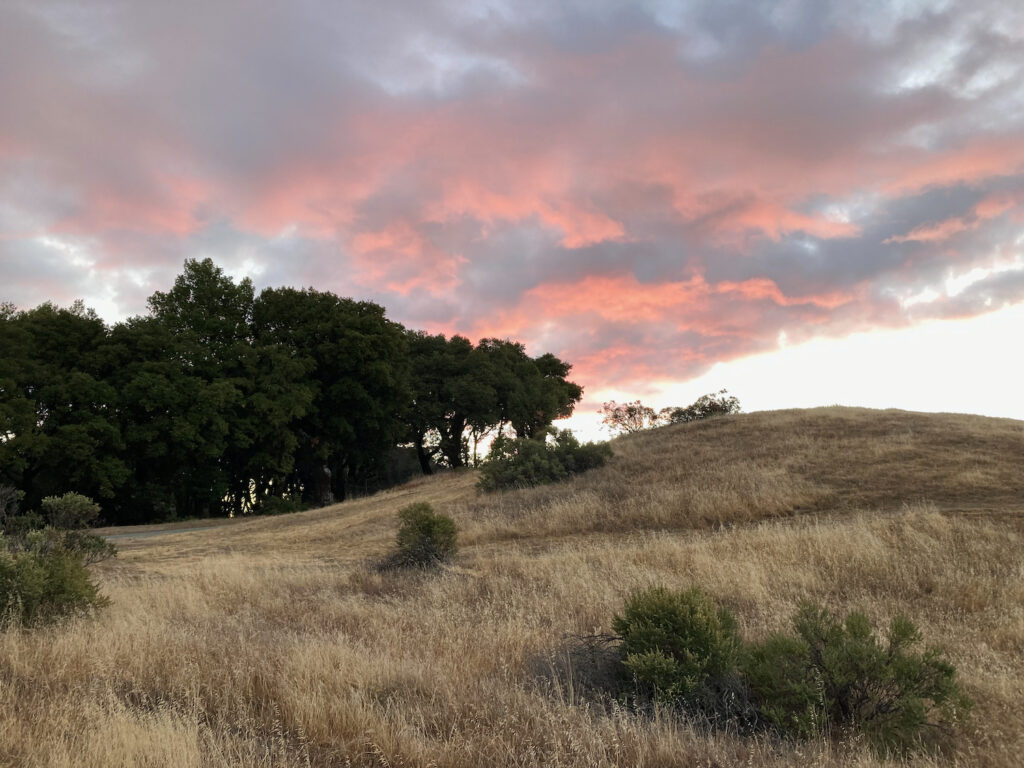For the 75th anniversary of the Unitarian Universalist Church of Palo Alto.
1947 — On April 6, Rev. Delos O’Brian of the American Unitarian Association holds the first meeting of the emerging congregation; some present at the first meeting were members of the old Unitarian Church of Palo Alto
1947 — Rev. Nat Lauriat, minister in San Jose, drives up each week to preach in Palo Alto
1948 — The first Sunday school is a cooperative venture with Palo Alto Friends Meeting; former Unitarian Josephine Duveneck is one of the teachers
1948 — The new congregation applies for membership in the American Unitarian Association (AUA) as the Palo Alto Unitarian Society
1949 — From April through June, Rev. Lon Ray Call, extension minister from the AUA, serves the new congregation; membership more than doubles
1949 — After Nat Lauriat turns them down, the congregation calls Rev. Felix Danford Lion as minister; Lion arrives in September
1950 — Services are held at the Palo Alto Community Center
1950 — PAUS hold first Flower Communion service
1951 — The congregation changes its name to the Palo Alto Unitarian Church (PAUC)
1951 — The congregation purchases a house for Rev. Dan Lion and his family to live in
1952 — Following the lead of the Los Angeles Unitarian church, PAUC refuses to sign California’s “Loyalty Oath,”and has to pay state tax even though it’s a nonprofit
1952 — The Forum is started by Dr. Robert C. North of Stanford, for open discussion of controversial questions of the day
1953 — PAUC, the San Jose Unitarian church, and the Los Gatos Unitarian Fellowship form a dental loan fund to aid children of migrant workers
1954 — PAUC purchases property at 505 Charleston Rd. for $30,060 [$300,000 in 2020 dollars]
1954 — Women’s Alliance raises $1,326 for PAUC [$13,000 in 202 dollars]
1954 — A second service is added at 9:30 a.m.

1955 — The choir sings for the first time in a PAUC service
1955 — PAUC no longer needs financial assistance from the AUA
1956 — Prominent Bay Area architect Joseph Esherick is chosen to design PAUC’s new buildings
1956 — Religious education enrollment is over 400, with waiting lists to get in
1956 — Emma Lou “Timmy” Allen becomes PAUC’s first choir director
1957 — PAUC raises $83,850 for the Building Fund [$783,000 in 202 dollars], and negotiates a bank loan for $90,000
1957 — PAUC assists a displaced persons family from East Germany
1957 — Rae Bell begins serving as children’s choir director
1958 — Ground-breaking ceremony at 505 Charleston Rd.; total cost of the new building, $178,000 [$1.6 million in 2020 dollars]
1958 — First Sunday services are held in new building
1958 — The Bookstore has its own space in the new building
1958 — San Mateo Unitarian church gives PAUC two redwood trees which are planted by the entrance drive
1958 — A madrone branch from Maj. Todd’s land on Skyline Drive is installed in the Main Hall


1959 — Congregation votes to support a spin-off group from PAUC which becomes the Unitarian Fellowship of Redwood City
1959 — C. Sargent Hearn, the first full-time salaried religious educator, is hired
1959 — Public address system is installed in Main Hall
1960 — Florence Sund becomes the Director of Religious Education
1960 — Main patio is finally paved
1960 — Congregation votes 75 to 1 to support the proposed consolidation of the Unitarians and the Universalists
1960 — PAUC assists a displaced persons family, plus four children from Indonesia
1961 — Women’s Alliance raises $4,590 for enlarging and paving the rear parking area [$403,000 in 2020 dollars]
1961 — Rev. D. Roen “Bud” Repp becomes assistant minister; Rev. Dan Lion goes on sabbatical for six months
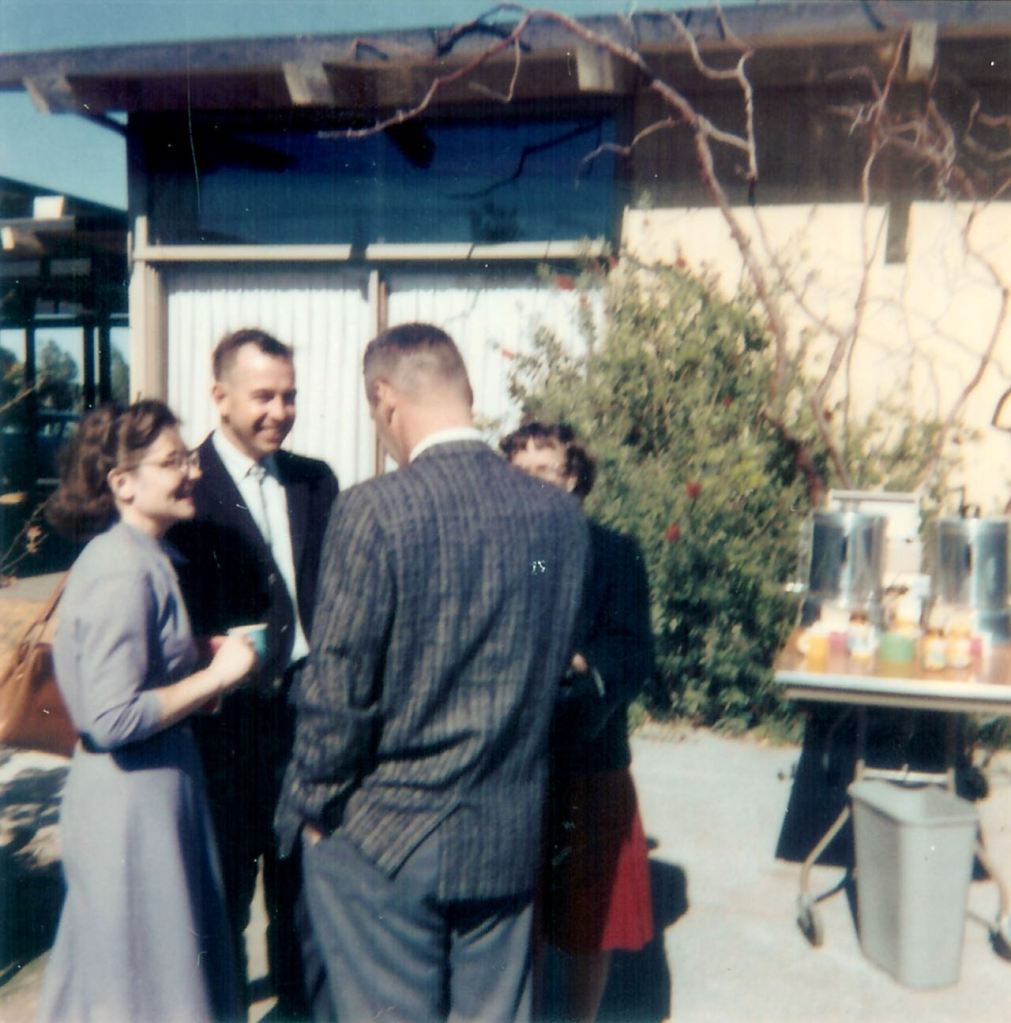
1962 — Wooden benches are installed in the main patio
1962 — Madrone branch from the Santa Cruz Mountains is installed on the wall of the Main Hall; it replaces a smaller one
1962 — Sunday school enrollment peaks at over 600; there are three Sunday services to accommodate the Sunday school
1962 — Congregation supports the spin off of the Sunnyvale UU Fellowship from PAUC
1963 — Choir has 50 members; Dr. Arthur P. Barnes, Stanford Music Professor, becomes choir director
1963 — Sunnyvale Fellowship is in operation; over the next two years, 100+ children transfer there, relieving pressure on PAUC’s Sunday school
1963 — Musician Jerry Garcia and Sara Ruppenthal marry in the Main Hall with Rev. Dan Lion officiating
1964 — Rev. Dan Lion participates in the Mississippi Summer Project (a.k.a. Freedom Summer), and is supported by PAUC
1964 — 100 junipers are planted in front of the Main Hall
1964 — Minister’s study is added to the rear of the office building
1964 — PAUC gives $2,000 [$17,000 in 2020 dollars] to the Redwood City Fellowship so they can hire a minister
1964 — Rev. Dan Lion officiates at a wedding ceremony for musicians Mimi Baez and Richard Fariña (they had been legally married in Paris a few months before)
1965 — PAUC supports Rev. Dan Lion’s trip to Selma, Ala.
1965 — Mike Young becomes assistant minister; congregation ordains and installs him in November
1965 — Congregation votes to investigate the possibility of building a larger church building at the front of the lot
1965 — Nationwide, Unitarian Universalism stops growing and begins declining around about 1965
1966 — PAUC sells 2.2 acres to Stevenson House elderly housing community at below market rates, then gives Stevenson House a $5,000 donation [$405,000 in 2020 dollars]
1966 — Activism against the Vietnam War
1967 — Clarice Gault hired as new Director of Religious Education
1967 — Revs. Dan Lion and Mike Young provide counseling to conscientious objectors
1968 — Congregation votes to not build a new church building, and instead votes to spend the money on “human rights” programs (however, some voted against building because they thought the design was ugly)
1968 — Rev. Mike Young resigns as of Dec. 31, 1968, and is not replaced
1968 — Stevenson House construction is completed, including the bridge linking Stevenson House with PAUC

1969 — Covered patio building is completed for $13,000 [$93,000 in 2020 dollars]
1969 — Due to falling adult attendance and religious education enrollment, PAUC goes down to two services per Sunday
1969 — Virginia Stephens and Ellen Thacher become co-DREs
1969 — Rev. Dan Lion and other Unitarians participate in anti-war march in downtown Palo Alto
1970 — PAUC forms a nonprofit corporation to start an alternative high school, called “Lothlorien High School”
1970 — Ron Garrison hired as “Youth Minister”
1970 — The congregations declines to invest in Black Affairs Council bonds
1970 — Rae Bell resigns as children’s choir director
1970 — Congregation declines to add “Universalist” to its name, at the requests of Universalists in the congregation
1971 — PAUC establishes a day care center, still in existence,which is named after the recently deceased Ellen Thacher
1971 — PAUC calls Rev. Dr. Ron Hargis as minister of religious education
1972 — Rev. Dan Lion resigns; Rev. Ron Hargis becomes sole minister until Rev. Sidney Peterman arrives in the fall as interim minister
1972 — PAUC grants to use of the church as sanctuary for those “acting according to the dictates of their conscience in opposition to civil of military actions” [i.e., for conscientious objectors]

1973 — PAUC votes to call Rev. William Jacobsen to serve as co-minister with Ron Hargis
1973 — A live-in custodian is hired, living in what is now the Choir Room
1973 — Women’s Alliance disbands, donates their remaining money to charity
1973 — The son of musician Joan Baez attends Thacher Children’s Center
1974 — “Stagflation” reduces income and increases expenses; the “Baby Bust” means fewer children; as a result PAUC shrinks financially and numerically
1974 — A grant makes it possible for 6th and 7th graders to participate in an art project for an afternoon with innovative artist Ruth Asawa
1975 — The Social Concerns Committee supports the United Farm Workers boycott of Gallo
1976 — Lothlorien High School ceases operations
1976 — The house purchased for use by the minister (the “parsonage”) is sold
1977 — Rev. Ron Hargis and Rev. William Jacobsen promise to resign effective Jan. 1, 1978, if finances don’t improve; when finances don’t improve, Hargis resigns, but Jacobsen does not
1977 — Gail Hamaker and other PAUC women are active in getting the Unitarian Universalist Association General Assembly to adopt the groundbreaking Women and Religion resolution
1978 — Religious education enrollment rises from 50 to 100 with leadership from DREs June and Bob Donmoyer
1978 — First annual “mini-vacation” at Bass Lake
1978 — Women and Religion resolution: PAUC votes to examine sexist religious beliefs, but declines to examine sexist language and actions

1979 — For the first time, PAUC offers a preschool class in Sunday school
1980 — DRE Mary Brau also becomes “executive officer” of the entire church
1980 — A women’s group, based on the Women and Religion resolution, is formed and given Board sanction
1980 — Nationwide, after a decade and a half of decline, Unitarian Universalism begins to grow at about 1% per year
1981 — The World Concerns Committee presents non-partisan lectures on various topics of social concern
1982 — Congregation votes in December to join South Bay Sanctuary Covenant to provide protection and advocacy for Central American refugees
1982 — Mary Brau resigns as DRE
1982 — Men’s group forms, with a dozen men meeting Monday evenings
1982 — Steel posts and chains are installed at entrance and exit drives to reduce vandalism
1982 — Congregation votes to remove sexist language from bylaws

1983 — 25th anniversary celebration; Rev. Dan Lion speaks at the celebration
1984 — The Sanctuary Committee raises $100 a month to support South Bay Sanctuary Covenant [$250 in 2020 dollars]
1984 — The Stevenson House Committee helps raise funds to renovate Stevenson House, arranges activities to “enliven the environment” of residents
1985 — Caring Network is organized to be “available to those of us in emergency situations”
1985 — The Social Action Committee is temporarily inactive, but it did distribute funds to South Palo Alto Food Closet and other groups
1986 — Wall paneling and track lighting installed in the Main Hall Lobby for art exhibits
1986 — PAUC UUYAN, a young adult group for people ages 18 to 35, meets nearly weekly
1987 — Congregation votes to join the Mid-Peninsula Peace Center
1987 — Congregation votes to make PAUC a Nuclear Weapons Free Zone
1987 — Congregation votes to join the Urban Ministry of Palo Alto, to address homelessness

1988 — Congregation votes to change name to the Unitarian Universalist Church of Palo Alto (UUCPA)
1988 — UUCPA is a founding member of Hotel de Zink, a short-term homeless shelter
1988 — Edith Parker becomes Director of Religious Education
1989 — Friendship Bridge linking UUCPA and Stevenson House is built
1989 — The Board of Trustees meets just two hours after the Loma Prieta earthquake
1989 — PAUC purchases its first computer, a Mac IIcx
1989 — Congregation votes that Bill Jacobsen shall retire no later than August 31, 1990
1990 — Rev. Sam Wright becomes interim minister
1990 — Rev. Sam Wright’s wife, Donna Lee, writes a history of the old Unitarian Church of Palo Alto (1905-1934)
1991 — Rev. Ken Collier is called as minister
1991 — Main Hall is often 80-90% full on Sunday mornings; Ken Collier first proposes double sessions
1992 — A new madrone branch from the Santa Cruz Mountains is installed in the Main Hall; this is the third branch to hang in the Main Hall
1992 — PAUC joins with three other UU congregations to form a congregation in Fremont

1993 — The large hanging quilt banners, made by fabric artist Wendy Hill, are installed in the Main Hall
1993 — Congregation votes to name Dan Lion as Minister Emeritus
1993 — “Caring and Sharing” added to Sunday service
1994 — Overgrown trees are removed from the back lawn in front of Rooms 11, 12, and 13 (now Rooms A, B, C, and D)
1994 — Bequest of $340,000 received from the estate of Dorothy B. White [$600,000 in 2020 dollars]
1995 — PAUC votes to include a non-discrimination clause in the bylaws
1995 — PAUC votes to provide up to $10,000 [$17,250 in 2020 dollars] to the new UU congregation in Fremont
1996 — “An Easter Egg Hunt was created for children of preschool through 2nd grade.”
1997 — PAUC joins with other churches to form Peninsula Interfaith Action
1997 — Congregation sees enough growth in membership to consider adding a second minister
1997 — Anti-Racism Task Force is formed
1997 — PAUC commissions sculptor Bennet Sykes Blackburn to make a wooden chalice
1998 — Articles of Incorporation are amended on April 19: “The name of this corporation is UNITARIAN UNIVERSALIST CHURCH OF PALO ALTO.”
1998 — UUCPA hires Rev. Til Evans as interim minister of religious education, to serve with Ken Collier
1998 — Ellen Thacher Preschool is now part of Palo Alto Community Child Care
1998 — UUCPA votes to support community minister Rev. Erinn Melby for three years, our first community minister
1999 — A capital campaign is begun, with the goal of a new administration building
1999 — UUA recognizes UUCPA as a Welcoming Congregation,welcoming to LGBTQIA+ people
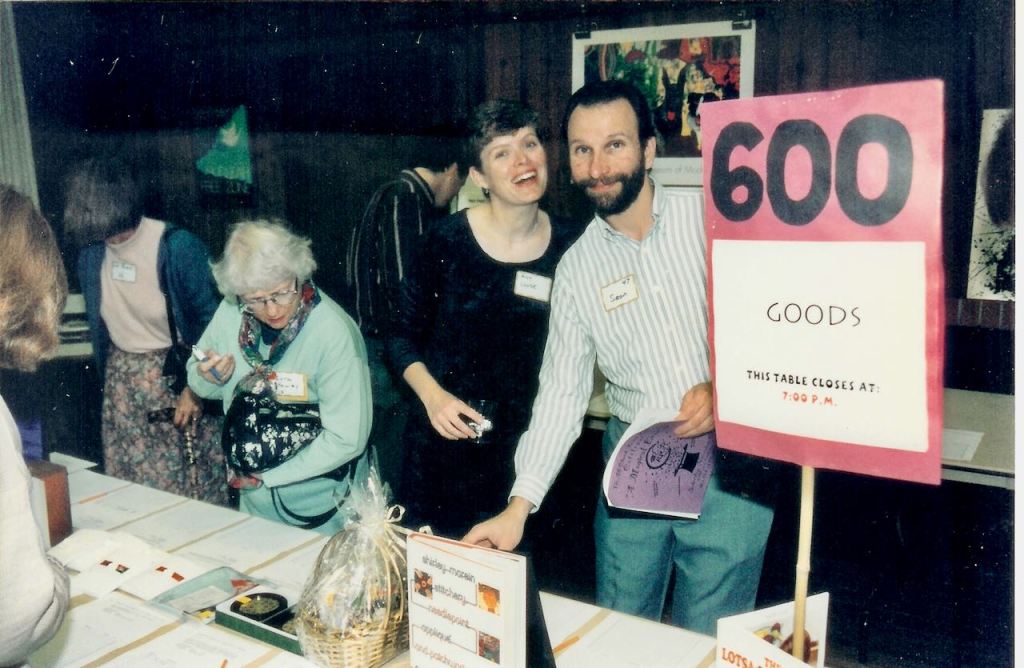
2000 — In January, UUCPA adds a second worship service on Sunday morning
2000 — Rev. Darcey Laine is called as minister of religious education
2000 — Live-in custodian resigns and is not replaced
2001 — Rev. Ken Collier resigns to become minister in Santa Barbara
2001 — Proposed building project will cost $1.82 million, more than the congregation can raise [$2.78 million in 2020 dollars]
2001 — Rev. Kurt Kuhwald starts as interim minister, just before 9/11

2002 — A Building Committee is formed, with a new lower budget of $686,000 [$1 million in 2020 dollars]
2003 — Rev. Amy Zucker is called as parish minister, to serve as co-minister with Darcey Laine
2003 — UUCPA adopts a statement of conscience opposing a preemptive strike by the U.S. on Iraq
2004 — Rooms 11-13 renovated as Rooms A-D (1 classroom and 3 offices); new restrooms added; office and library reconfigured
2004 — UUCPA votes to reaffirm its support for marriage equality
2004 — The Senior High Youth Group and Darcey Laine, along with youth from the Redwood City Fellowship, install the first labyrinth at UUCPA
2005 — New sound system installed in the Main Hall
2005 — Parking lot resurfaced
2005 — Rev. Amy Zucker marries, becomes Amy Zucker Morgenstern
2006 — Congregation adopts a relational covenant
2006 — Wifi installed in the Fireside Room and most classrooms
2007 — 60th anniversary celebration, Rev. Dan Lion speaks
2007 — Rev. Darcey Laine resigns, as her family wants to relocate to upstate New York
2007 — Rev. Eva Ceskava becomes interim minister of religious education
2008 — Til Evans garden is completed
2008 — Hearing aid loop system in Main Hall improves accessibility for persons who are hard of hearing
2008 — Welcoming Congregations Committee organizes congregation to defeat Prop 8, a ballot measure to ban same-sex marriage

2009 — Congregation hires Rev. Dan Harper as assistant minister of religious education
2009 — Church consultant Alice Mann suggests bringing the congregation together more often, inspiring Second Sunday Lunches to begin
2009 — Nationwide, Unitarian Universalism begins small annual decline that continues to the present
2010 — With the help of church consultant Alice Mann, UUCPA sets goal of “adding the next 50 people” as measured by average annual attendance
2010 — Rev. Sean Parker Dennison serves as sabbatical minister, UUCPA’s first transgender minister
2011 — Solar panels installed on the roof of the Main Hall, providing about half of UUCPA’s energy needs
2011 — New fenced-in play area installed in front of Thacher School’s playground
2011 — Bruce Olstad becomes Music Director
2011 — Congregation votes to endorse single payer health insurance for California

2012 — Energy efficient LED lights installed in the parking lot
2012 — Our Whole Lives comprehensive sexuality education classes are open to the wider community
2012 — Navigators program is organized at UUCPA, providing scouting that welcomes all genders and LGBTQIA+ persons
2013 — Board of Trustees transitions to using an online document filing system
2013 — UUCPA moves membership database to a cloud-based system
2013 — Music Director Bruce Olstad launches Bodhi Tree North concert series to raise money for charitable causes
2014 — The front of the lot is landscaped, junipers removed, and a native plant garden and a larger labyrinth are installed
2014 — Religious education enrollment peaks at 135
2014 — Sunday school “Ecojustice class” installs first rain barrel at UUCPA
2015 — UUCPA provides meeting space and use of our kitchen to Stevenson House, while their buildings are renovated
2015 — Congregation votes to ordain UUCPA member and hospital chaplain Melissa Thompson
2016 — Board prohibits smoking on campus
2016 — Membership and Growth Committee reports that UUCPA is halfway to the goal of adding 50 people, as measured by average annual attendance
2017 — UUCPA adds more solar panels to Main Hall roof, which now produce all the congregation’s electrical needs
2017 — UUCPA leases the parking lot to a solar energy company to erect a solar panel array
2017 — Staff cut-backs due to attrition save UUCPA money
2017 — UUCPA moves website to WordPress CMS
2018 — UUCPA begins hosting Heart and Home Collaborative, a women’s homeless shelter, for 6 weeks each winter
2018 — A Membership Engagement Coordinator is hired for 15 hours per week, on a one-year trial basis
2018 — Congregation considers removing the word “Church” from its name, but confronted with 5 possible new names, none receives the necessary 2/3 majority

2019 — Rising health insurance costs prompt Board of Trustees to create innovative funding scheme that maintains insurance coverage while lowering costs
2019 — About 30% of enrolled children and youth are non-white
2020 — COVID cause state-wide shutdown, UUCPA moves worship services and programs online, congregation members respond with creativity and resilience
2020 — Due to COVID lockdown, Heart and Home homeless shelter remains at UUCPA for 3 months, 24/7
2020 — UUCPA receives federal Paycheck Protection Plan loan to help cover payroll during COVID

2021 — In the Main Hall, Worship Tech crew upgrades audio board and adds 3-camera video and large video screens, to allow multi-platform livestreaming capability
2021 — Of 99 people responding to a congregational survey, roughly 15% are non-white
2021 — UUCPA begins hosting a Safe Parking Program, where up to four homeless families can live in their cars
2022 — UUCPA celebrates its 75th anniversary!
Timeline researched by Rev. Dan Harper
Updates: (1) 2021-11-15: corrections and additions to timeline; (2) 2021-11-15: added approximate constant dollar values; (3) 2021-12-09: began adding vintage photos.


